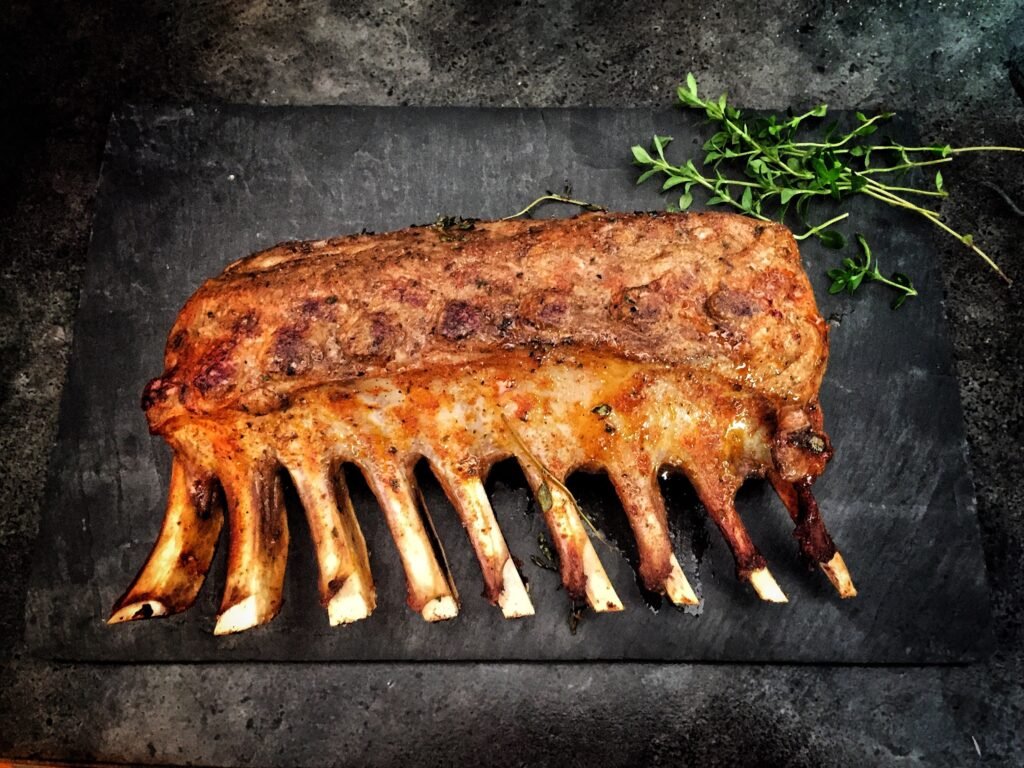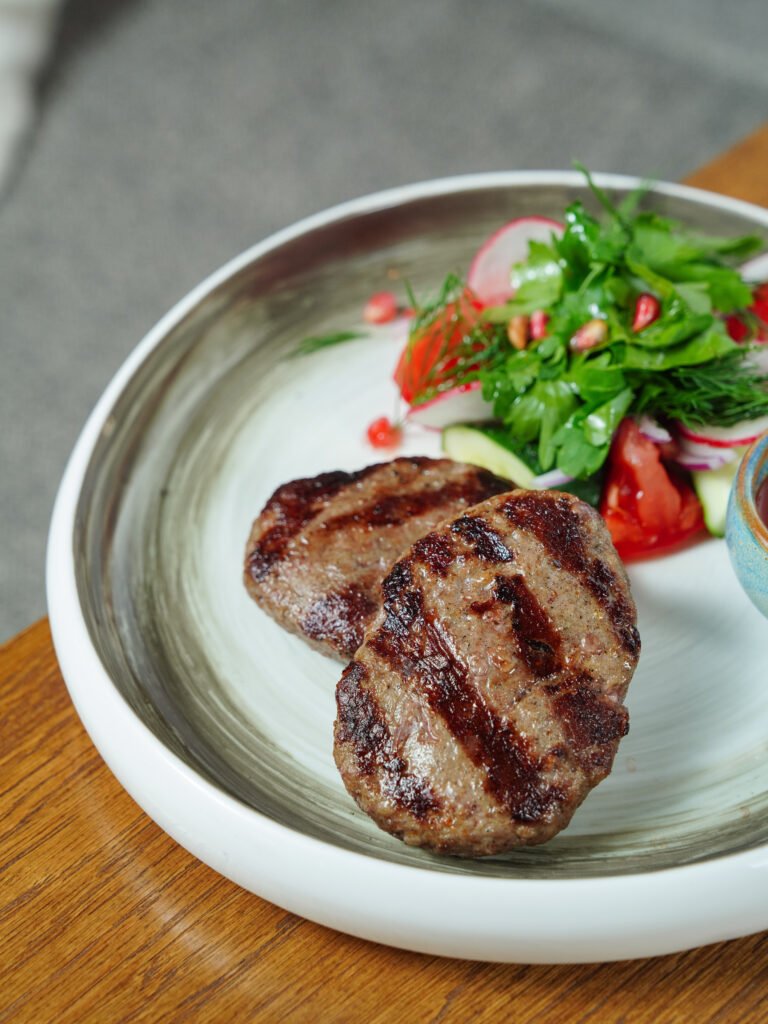If you want to elevate your grilling game and savor the juiciest, most mouthwatering steak you’ve ever had, then look no further. In this article, we will explore the top techniques for marinating and grilling a steak to perfection. From choosing the right marinade to mastering the grill temperatures, you will learn everything you need to know to create a flavor-packed steak that will leave your taste buds dancing with delight. So fire up the grill, grab your apron and get ready to impress your friends and family with your newfound grilling skills.

Choosing the Right Cut of Steak
Choosing the right cut of steak is essential for a delicious and satisfying meal. The cut of steak you select will greatly impact the flavor, tenderness, and overall enjoyment of your grilled masterpiece. There are various factors to consider when making this decision, such as the cut’s tenderness, marbling, and suitability for grilling.
The Importance of the Cut
The cut of steak refers to the specific section of the beef from which it is taken. Each cut has its unique characteristics and flavor profile. Some cuts are naturally more tender and flavorful, making them ideal for grilling, while others require marinating or special cooking techniques to achieve the desired results.
When selecting a cut of steak, consider your taste preferences, the occasion, and your budget. If you prefer a tender, juicy steak with ample marbling, options like ribeye or T-bone steaks are excellent choices. These cuts tend to be more expensive but are well worth the splurge for a special occasion. On the other hand, if you’re looking for a more affordable option that still delivers great flavor, you can opt for sirloin or flank steaks.
Best Cuts for Grilling
When it comes to grilling, certain cuts of steak are known to excel on the flames. These cuts possess the ideal balance of tenderness, flavor, and ability to absorb the smoky essence of the grill. Here are some of the best cuts for grilling:
- Ribeye: Known for its rich marbling and intense flavor, the ribeye is a favorite among steak lovers. Its tenderness and juiciness make it a perfect choice for grilling.
- New York Strip: Another popular choice, the New York strip steak offers a balance of tenderness and robust flavor. It grills beautifully and delivers a satisfying steakhouse experience.
- Filet Mignon: Loved for its melt-in-your-mouth texture, the filet mignon is exceptionally tender and requires minimal effort to grill to perfection.
- Porterhouse: This cut combines the tender filet mignon and the flavorful strip steak, offering the best of both worlds. It’s a substantial cut that’s perfect for sharing.
- Skirt Steak: While slightly less tender than the other cuts mentioned, skirt steak boasts bold flavor and an incredibly satisfying chew when cooked correctly. It’s a fantastic choice for fajitas or other dishes where a robust beefy taste is desired.
When choosing a cut of steak, consider the cooking method, your personal preferences, and the occasion. Each cut offers a unique grilling experience that will surely leave your taste buds wanting more.
Preparing the Steak
Before you fire up the grill, it’s crucial to prepare your steak properly. This preparation process ensures that your steak cooks evenly, retains its juiciness, and packs a flavorful punch. Let’s explore the essential steps to prepare your steak for the grill.
Trimming Excess Fat
One crucial step in preparing your steak is trimming excess fat. While fat adds flavor, excessive amounts can cause flare-ups on the grill and result in uneven cooking. To trim the fat, use a sharp knife and remove any thick pockets or heavy layers. Leaving a thin layer of fat can enhance the steak’s taste and juiciness without overwhelming the cooking process.
Piercing the Meat
Piercing the meat before grilling can help tenderize your steak while allowing seasoning and marinades to penetrate deeper into the flesh. Using a fork or meat tenderizer, gently pierce the steak on both sides, creating tiny holes. Be careful not to go overboard, as excessive piercing can lead to loss of moisture and tenderness.
Seasoning the Steak
Seasoning is a crucial step in preparing your steak for grilling. The right combination of spices and herbs enhances the natural flavors of the meat, adding depth and complexity. Choose a seasoning rub or a simple blend of salt, pepper, and garlic powder to accentuate the steak’s taste. Rub the seasoning evenly onto both sides of the steak, ensuring it adheres to the meat. Let the seasoned steak rest at room temperature for at least 30 minutes before grilling to allow the flavors to meld together.
Marinating the Steak
Marinating your steak can take it to a whole new level of deliciousness. A marinade not only helps to tenderize the meat but also infuses it with a myriad of flavors, creating a mouthwatering experience. Let’s dive into the world of marination and explore the various aspects to consider.
The Purpose of Marination
Marination serves two primary purposes: to enhance the steak’s tenderness and to impart additional flavors. The acid in the marinade, such as vinegar or citrus juices, breaks down the muscle fibers of the steak, making it more tender and juicy. Additionally, the marinade’s ingredients, such as herbs, spices, oils, and sauces, infuse the steak with unique flavors that complement its natural taste.
Marinating Ingredients
The key to a successful marinade lies in the selection and combination of ingredients. While there’s no shortage of marinade recipes available, it ultimately comes down to personal preference. Here are some common ingredients to consider:
- Acidic Components: Vinegar, citrus juices (lemon, lime, orange), yogurt, or buttermilk.
- Flavor Enhancers: Soy sauce, Worcestershire sauce, teriyaki sauce, balsamic vinegar, or Dijon mustard.
- Aromatics and Herbs: Garlic, onion, ginger, rosemary, thyme, cilantro, or parsley.
- Sweeteners: Honey, brown sugar, maple syrup, or molasses.
- Oils: Olive oil, vegetable oil, sesame oil, or flavored oils.
Combine these ingredients in different proportions to create a marinade that suits your taste preferences. Remember to taste the marinade before adding the steak to ensure the flavors are well-balanced.
Proper Marinating Time
The length of marination time depends on the thickness and type of steak. Thinner cuts like skirt steaks or flank steaks typically require around 30 minutes to 2 hours of marinating. Thicker cuts like ribeye or sirloin steaks can benefit from marinating anywhere between 2 and 24 hours to allow the flavors to permeate the meat.
It’s essential to strike a balance when marinating. While longer marination times can enhance flavor, marinating for too long can break down the steak’s texture and create a mushy consistency. Experiment with different marination times to find the sweet spot that suits your preferences.
Enhancing Flavors with Marinades
Marinades offer endless possibilities for enhancing the flavors of your steak. Consider experimenting with different combinations to create a range of taste profiles. For example, a classic red wine and herb marinade can elevate the steak’s richness, while a spicy Asian-inspired marinade can add a kick of heat.
To optimize flavor infusion, ensure you marinate your steak in a tightly sealed, non-reactive container like a ziplock bag or a glass dish. This prevents any cross-contamination and allows the marinade to evenly coat the meat. Remember to discard the marinade that comes into contact with raw meat to prevent any food safety risks.
Grilling Techniques
Grilling a steak is an art that requires some finesse. To achieve the perfect balance of a flavorful, tender interior and a beautifully seared exterior, it’s essential to understand different grilling techniques and when to use them.
Direct Grilling
Direct grilling involves placing the steak directly over the heat source. This technique is ideal for thinner cuts of steak that cook quickly and benefit from a high, direct heat. It allows for a delicious sear on the outside while retaining a juicy interior.
To direct grill, preheat your grill to medium-high heat and place the steak directly over the flames. Close the lid and cook for the recommended time, usually 4-5 minutes per side for medium-rare, depending on the thickness of the steak. Flip the steak only once to achieve those coveted grill marks. Use a meat thermometer to ensure the steak reaches your desired doneness.
Indirect Grilling
Indirect grilling involves placing the steak away from the heat source, allowing for slower cooking and gentle heat that ensures even cooking throughout the steak. This technique is perfect for thicker cuts that require longer cooking times to reach the desired doneness.
To indirect grill, preheat one side of your grill to medium-high heat and leave the other side unlit or on low heat. Place the steak on the unheated side and close the lid. Cook for the recommended time, then flip the steak and cook for the remaining time. Use a meat thermometer to monitor the steak’s internal temperature as it cooks.
Temperature Control
Temperature control is crucial for grilling a flawless steak. Ensure your grill is preheated to the appropriate temperature for your desired doneness. The USDA recommends the following internal temperatures for steak:
- Rare: 125°F (51°C)
- Medium Rare: 135°F (57°C)
- Medium: 145°F (63°C)
- Medium Well: 150°F (66°C)
- Well Done: 160°F (71°C)
Invest in a reliable meat thermometer to gauge the steak’s doneness accurately. Insert the thermometer into the thickest part of the steak without touching the bone or the grill grates.
Timing and Turning
Timing and turning are essential elements of grilling a steak to perfection. Follow these guidelines to achieve the desired results:
- For even cooking, bring the steak to room temperature before grilling. This ensures that the steak cooks evenly from edge to edge.
- Avoid constantly flipping the steak. Instead, aim for a maximum of two flips during the entire cooking process. This gives the steak ample contact with the grill to develop a beautiful crust and allows for even cooking.
- Allow the steak to rest after grilling. Resting allows the juices to redistribute and results in a more flavorful, tender steak. Tent the steak loosely with foil and let it rest for about 5-10 minutes before slicing and serving.

Preheating and Oiling the Grill
Before placing your prized steak on the grill, it’s essential to preheat and oil the grates. These simple steps ensure that your steak cooks evenly, prevents sticking, and creates those sought-after grill marks.
The Importance of Preheating
Preheating your grill is a must for achieving the perfect sear and even cooking. Preheating not only brings the grill up to the desired temperature but also burns off any residual food debris or contaminants from previous use.
To preheat your grill, turn on all burners to the highest setting and close the lid. Allow the grill to heat up for around 10-15 minutes, or until it reaches the desired temperature for your grilling technique. A properly preheated grill ensures that your steak sears beautifully upon contact and prevents sticking.
Properly Oiling the Grill
Oiling the grill grates before placing the steak helps prevent sticking and ensures easy flipping and removal. While the seasoned steak’s fat content may help prevent sticking to some extent, it’s essential to add an extra layer of oil to minimize any potential sticking.
To oil the grill, follow these steps:
- Fold a paper towel into a small pad, using tongs to hold it.
- Dip the paper towel pad into a small bowl of oil, such as vegetable or canola oil.
- Holding the paper towel pad with the tongs, thoroughly coat the grill grates with the oiled paper towel. Ensure all cooking surfaces are lightly coated.
Oiling the grill grates helps create a non-stick surface and adds a touch of extra flavor to the steak.
Cooking the Steak
Finally, the moment has arrived to grill your steak to perfection. With the prepping and marinating completed, it’s time to focus on the actual cooking process. Here’s everything you need to know to cook your steak to your desired level of doneness.
Grilling Time for Different Cuts
Different cuts of steak require differing cooking times due to their thickness and recommended final internal temperature. Use the following guidelines as a starting point and adjust accordingly based on your personal preferences and the thickness of the steak:
- Ribeye: 7-8 minutes for medium-rare, 9-10 minutes for medium.
- New York Strip: 6-7 minutes for medium-rare, 8-9 minutes for medium.
- Filet Mignon: 5-6 minutes for medium-rare, 7-8 minutes for medium.
- Porterhouse: 10 minutes for medium-rare, 12 minutes for medium.
- Skirt Steak: 4-5 minutes for medium-rare, 6-7 minutes for medium.
Keep in mind that these are general guidelines, and the actual cooking time may vary depending on factors such as grill temperature, thickness of the steak, and personal preferences. Use a meat thermometer to accurately determine the steak’s internal temperature and adjust the cooking time accordingly.
Determining Doneness
Determining the doneness of your steak is crucial to achieve your desired level of juiciness and tenderness. There are several methods to check for doneness:
- Using a Meat Thermometer: Insert a meat thermometer into the thickest part of the steak, avoiding bone or gristle. The internal temperature will indicate the steak’s doneness according to the USDA guidelines mentioned earlier.
- The Touch Test: Gently press the center of the steak with your fingertips. A rare steak will feel soft and slightly springy, medium-rare will have some resistance, and medium steak will feel firmer. Develop a sense of touch through practice to accurately determine doneness.
- Sight and Juices: For a beginner, cutting into the steak to check the color and juices is also an option. However, this method should be used sparingly, as it can result in moisture loss and less visually appealing presentation.
Remember that the steak’s internal temperature will rise slightly during the resting period, so it’s best to aim for a temperature slightly below the desired doneness.
Resting the Steak
Allowing the steak to rest after grilling is a crucial step that should not be overlooked. Resting allows the steak to reabsorb its juices and ensures a more tender and flavorful eating experience.
After removing the steak from the grill, tent it loosely with foil or place it on a cutting board and cover it with a clean towel. Allow the steak to rest for 5-10 minutes, depending on its thickness. During this time, the residual heat continues to cook the steak slightly, while the juices redistribute throughout the meat. Resting also prevents excessive juice loss when cutting into the steak, resulting in a more succulent and satisfying eating experience.

Adding Flavors with Toppings and Sauces
While a perfectly grilled steak can stand magnificently on its own, adding delicious toppings and sauces can elevate the experience to new heights. Here are a few classic options to consider:
Simple Herb Butter
Herb butter is a simple yet elegant way to enhance the flavors of your grilled steak. To make herb butter, mix softened unsalted butter with finely chopped fresh herbs like parsley, thyme, or chives. Season with salt and pepper to taste. Spoon a dollop of herb butter onto each steak while it’s still hot, allowing the butter to melt and infuse the steak with its rich, aromatic flavors.
Classic Steak Sauce
For those who prefer a traditional steakhouse experience, a classic steak sauce is a perfect choice. Homemade or store-bought, steak sauces like béarnaise, peppercorn, or mushroom cream complement the steak’s flavor and add a touch of richness. Drizzle your favorite steak sauce over the grilled steak just before serving or serve it on the side for dipping.
Mushroom and Wine Reduction
If you crave an earthy, savory topping, a mushroom and wine reduction is an excellent choice. Sauté a mix of sliced mushrooms in a pan with butter until golden brown. Then, deglaze the pan with a splash of red wine and let it reduce until the liquid thickens. Spoon the mushroom and wine reduction over the grilled steak, allowing the steak to soak up the delicious flavors.
Feel free to explore other topping options such as blue cheese crumbles, caramelized onions, or roasted garlic puree. The possibilities are endless, allowing you to customize your grilled steak according to your taste preferences.
Serving Suggestions
When it comes to serving your perfectly grilled steak, thoughtful accompaniments and garnishes can elevate the overall dining experience. Here are some serving suggestions to consider:
Accompaniments
Pair your grilled steak with a variety of accompaniments that complement its flavors. Some popular choices include:
- Baked or mashed potatoes: Creamy and satisfying, potatoes make a wonderful side dish to accompany your steak.
- Grilled vegetables: Add color and freshness to your plate by grilling a medley of vegetables such as asparagus, zucchini, bell peppers, or corn.
- Salad: A light and refreshing salad, whether it’s a classic Caesar or a vibrant mixed greens salad, provides a balance to the richness of the grilled steak.
- Crusty bread: Serve a selection of crusty bread slices or rolls to mop up any remaining steak juices or accompanying sauces.
Consider the flavor profiles and textures of your chosen accompaniments to create a harmonious and well-rounded meal.
Garnishes
Garnishes not only add visual appeal but also provide additional flavors and textures. Here are some garnishing ideas for your grilled steak:
- Fresh herbs: Sprinkle a handful of chopped fresh herbs like parsley, basil, or cilantro over the grilled steak for a burst of freshness.
- Citrus zest: Grate some lemon or orange zest over the steak to impart a subtle citrusy aroma and elevate the taste.
- Cracked black pepper: Generously grind fresh black pepper over the steak to add a touch of spice and complexity.
- Microgreens: Top the steak with delicate microgreens, such as arugula or baby spinach, for a vibrant pop of color.
Garnishing your grilled steak not only adds an attractive finishing touch but also showcases your attention to detail and culinary finesse.
Additional Tips and Tricks
Grilling the perfect steak takes practice, and these additional tips and tricks can help you refine your grilling skills and enhance the overall flavor:
Enhancing Flavor with Smoke
Experiment with adding smoky flavors to your grilled steak by using wood chips or chunks in a smoker box or foil pouch. Soak the wood chips or chunks in water for 30 minutes, then drain and place them on the grill or in a smoker box. As the wood smolders, it releases aromatic smoke that permeates the steak, imparting a delightful smoky essence. Popular wood options include mesquite, hickory, and applewood, each offering its unique flavor profile.
Using a Meat Thermometer
Investing in a reliable meat thermometer is a game-changer for grill masters. By measuring the steak’s internal temperature, you can ensure consistent results every time. Whether you prefer a rare, medium-rare, or well-done steak, a meat thermometer takes the guesswork out of determining the steak’s doneness. Remember to insert the thermometer into the thickest part of the steak, away from bone or fat, for the most accurate reading.
Conclusion
Grilling a flavorful steak is a culinary journey that combines technique, knowledge, and a passion for creating a memorable dining experience. By choosing the right cut, properly preparing and marinating the steak, mastering grilling techniques, and adding delicious toppings and sauces, you can elevate your steak game to new heights.
Remember to take your time, be patient, and experiment with different flavors and cooking methods. With practice and a little finesse, you can become a grill master capable of delivering perfectly grilled steaks that will leave your guests in awe.
So fire up the grill, select your favorite cut of steak, and embark on a delicious adventure that will undoubtedly satisfy your cravings and impress your taste buds. Happy grilling!

